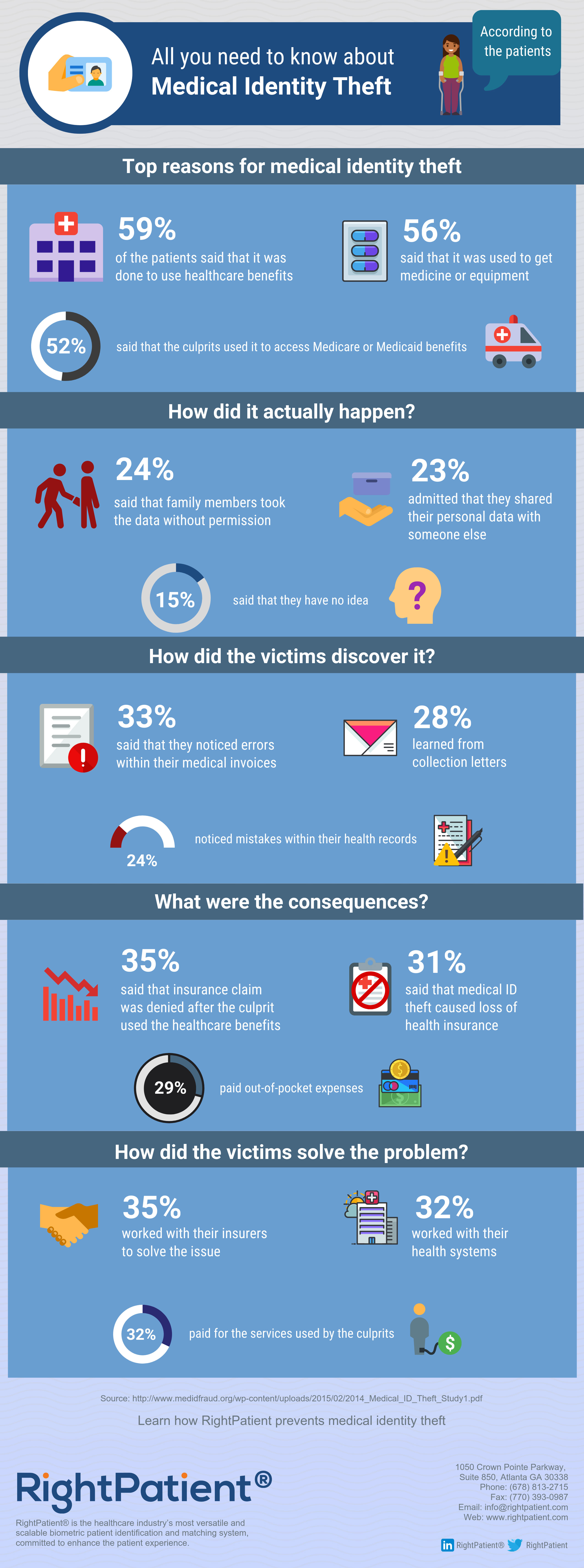Infographic: All You Need To Know About Medical Identity Theft
Learn what medical identity theft is, how and why they happen, how victims discover it, and what the consequences are via this infographic.
Learn what medical identity theft is, how and why they happen, how victims discover it, and what the consequences are via this infographic.
Medical identity theft is nothing new;- it is becoming increasingly common nowadays. But what is it? It occurs when someone other than the patient uses the patient’s information to gain unauthorized access and avails healthcare services.
However, what are the consequences, reasons, and ways out of medical identity theft? How does it happen? How do patients understand that they fell victim to medical identity theft? These are questions that this insightful infographic will answer.
This infographic is based on a study presented by Ponemon Institute, which regularly conducts studies regarding healthcare issues such as patient safety, patient misidentification, patient experience, and so on.
The infographic’s format is quite straightforward; it highlights a question and then provides the top three answers which were given by the victims of medical identity theft.
The infographic starts with the top three reasons for medical identity theft. 59% of patients said that it was done to use healthcare benefits, 56% said that it was used to get medicine or equipment, and 52% responded that the culprits used it to access Medicare or Medicaid benefits.
The next question was regarding how medical identity theft took place. 24% said that family members took the data without permission, 23% admitted they had shared their healthcare information with someone else, and 15% said that they have no idea.
The top three ways victims discovered that their medical identities were stolen were when they noticed errors within their medical invoices, which was learned from their collection letters. In contrast, others saw mistakes within their health records.
The top three consequences were that their insurance claims were denied after the culprits used the healthcare benefits, medical ID theft caused the loss of health insurance, while others paid out-of-pocket expenses.
In solving the issue, 35% of patients worked with their insurers to settle the matter, 32% of patients worked with their health systems, and 32% paid for the services used by the culprits.
